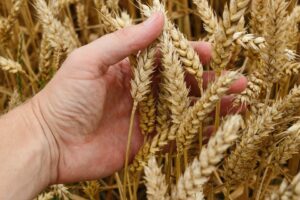
Since the beginning of the Russian aggression, Ukraine has been forced to change the geography of agricultural exports, as a result of which the share of Europe reached 59% in January-October 2023 compared to 32% in 2021, the Ukrainian Agribusiness Club (UCAB) reported on Facebook.
According to the report, such an increase in exports of agricultural products to Europe is forced and is explained by a decrease in supplies to other regions: the share of Africa decreased to 7% from 14%, Asia – to 12% from 19%, and Southeast Asia – to 4% from 13%.
“The main reason for these changes is the blockade of Ukrainian seaports by Russian troops. The development of alternative routes, which were possible only through the territory of the EU countries, led to changes. Ukrainian farmers were forced to look for buyers of their products in Europe,” the analysts explained.
The UCAB reminded that deliveries to Africa and Asia during the war became possible only thanks to the work of the grain corridor in cooperation with the UN and Turkey, as well as the temporary grain corridor, which is currently shipping.
In 2023, the structure of exports of Ukrainian agricultural products in terms of the main export items is similar to last year’s figures: 39% were grains, 26% were vegetable oils, 4% were meat, and 2% were dairy products, eggs, and honey. At the same time, exports of oilseeds decreased to 12% compared to 16% in 2022, while exports of oilcake increased to 6% from 5% during the year. The permission to supply sugar to foreign markets allowed producers to increase its share in agricultural exports to 3% over the year.
In pre-war 2021, the structure of Ukraine’s agricultural exports was as follows: cereals – 45%, vegetable oils – 26%, oilseeds – 9%, meals – 6%, meat – 3%, and tobacco products – 2%.
“The only way to resume exports to Ukraine’s traditional markets is to ensure the safety of sea export routes and increase the volume of shipments through this channel,” the UCAB summarized.
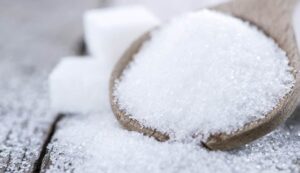
In the 2022-2023 marketing year (MY), Ukrprominvest-Agro Group exported more than 120 thousand tons of sugar to the European Union, the group’s press service reported on Facebook.
“The quality of our products, excellent transaction support services, speed in decision-making, a variety of options for packaging and shipment of products, a responsible approach to work at every stage are the factors that have become the key to the success of Ukrprominvest-Agro in the export market in 2022/23 marketing year. We plan to further develop this area and maintain our leadership among sugar exporters in Ukraine in the current marketing year,” the press service quoted Artem Semenenko, Director of the company’s Commercial Department, as saying.
“Ukrprominvest-Agro is engaged in the cultivation of crops, production of sugar, flour, meat and dairy farming. The group’s land bank exceeds 116.5 thousand hectares and is located mainly in regions that have not been invaded by the Russian occupiers.
The total number of cattle of the agricultural holding is 6.3 thousand, pigs – 12 thousand. The total elevator storage capacity of the group is 120 thousand tons. The group’s sugar business is represented by two sugar factories in Vinnytsia region. It supplies grain processing products to Moldova, Georgia, Turkmenistan, Israel, Palestine, Angola, Lebanon, Syria, and Vietnam.
Ukrprominvest-Agro comprises Agroprodinvest Group LLC, PJSC Podillya Production Complex, LLC Zorya Podillya Production Complex, LLC Vinnytsia Bakery No. 2, AF Dniproagrolan, AF Ivankivtsi, LLC Mas-Agro, LLC Pravoberezhne, and LLC Progress-NT.
The owner of the agricultural holding since December 2019 is the son of the former President of Ukraine Oleksiy Poroshenko.
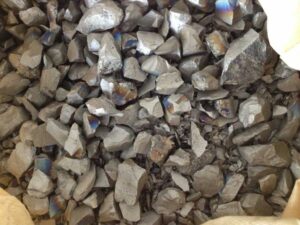
In January-October this year, Ukraine increased exports of ferroalloys in physical terms by 15.1% year-on-year to 334,008 thousand tons.
According to statistics released by the State Customs Service, exports of ferroalloys decreased by 42% to $288.958 million in monetary terms.
The main exports were to Poland (53.65% of supplies in monetary terms), Turkey (13.47%) and the Netherlands (8.67%).
In addition, in the period under review, Ukraine imported 6.790 thousand tons of these products, which is 61.2% less than in January-October 2022. In monetary terms, imports decreased by 58.5% to $27.192 million.
Imports were carried out mainly from India (22.13%), Armenia (18.14%) and China (16.52%).
As reported, in 2022, Ukraine reduced exports of ferroalloys in physical terms by 47.7% compared to the previous year – to 349,560 thousand tons, in monetary terms by 46% – to $ 564,136 million. At the same time, the main deliveries were made to Poland (53.25% of exports in monetary terms), the Netherlands (13.13%) and Romania (5.66%).
In addition, last year Ukraine imported 20.546 thousand tons of these products, which is 65.5% less than in 2021. In monetary terms, imports decreased by 59.1% to $72.705 million. Imports were carried out mainly from Norway (22.67%), China (15.60%) and Kazakhstan (14.10%).
The business of the Stakhanov and Zaporizhzhia Ferroalloy Plants (SZF and ZZF) was organized by PrivatBank (Kyiv) before the nationalization of the financial institution. Nikopol Ferroalloy Plant is controlled by EastOne Group, established in the fall of 2007 as a result of the restructuring of Interpipe Group, and Privat Group.
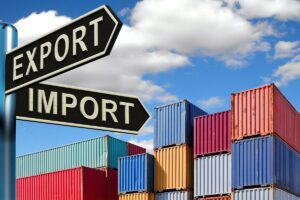
The volume of imports to Ukraine in January-October 2023 amounted to $52.17 billion, which is 18.2%, or $8.03 billion, more than in the same period a year earlier.
At the same time, the volume of Ukrainian exports decreased by 19.1%, or $7.03 billion, to $29.83 billion, according to the website of the State Customs Service.
The negative balance for the first 10 months of this year amounted to $22.34 billion, which is 3.1 times more than in the same period last year.
According to the State Customs Service, exports of goods fell by 18.1% to $27.1 billion in the first nine months of the year, while imports increased by 18.9% to $46.6 billion, and the negative balance of trade in goods increased by 3.2 times to $19.5 billion.
It is specified that over the first 10 months of this year, imports from the EU increased by 23.5% to $26.71 billion, while exports decreased by 15.8% to $19.45 billion.
At the same time, imports from the CIS countries fell 4.2 times to $1.03 billion in January-October this year compared to the same period last year, while exports from Ukraine to these countries fell 36.4% to $1.33 billion, making trade with these countries surplus, whereas before the war it was traditionally deficit.
Finally, imports from other countries increased by 34% to $24.42 billion over 10 months of this year, while imports decreased by 22.4% to $9.04 billion.
“At the same time, taxable imports amounted to $43.4 billion, which is 83% of the total volume of imported goods. The tax burden per 1 kg of taxable imports in January-October 2023 amounted to $0.49 per kg, which is 44% more than in the same period in 2022,” the release said.
According to the State Customs Service, the countries from which Ukraine imported the most goods were: China – $8.4 billion ($6.6 billion in 10 months of 2022), Poland – $5.5 billion ($4.4 billion) and Germany – $4.1 billion ($3.7 billion).
Most of Ukraine’s goods were exported to Poland – $4.1 billion ($5.7 billion), Romania – $3.3 billion ($3.0 billion), and Turkey – $2.0 billion ($2.4 billion).
In January-October 2023, 65% of the total volume of imported goods was machinery, equipment and transport – $16 billion (UAH 115.2 billion, or 31% of customs revenues, was paid to the budget during customs clearance), chemical products – $9.3 billion (UAH 63.6 billion, or 17%), fuel and energy products – $8.7 billion (UAH 79.3 billion, or 21%).
It is specified that imports of machinery, equipment and transport increased by 30%, chemical products – by 17%, while fuel and energy products decreased by 18%.
The top three most exported goods from Ukraine are: food products – $17.7 billion (down 4%), metals and metal products – $3.3 billion (down 19%), machinery, equipment and transport – $2.5 billion (down 30%).
The State Customs Service added that UAH 500.7 million was paid to the budget during customs clearance of exports of goods subject to export duties.
The State Customs Service also reported that in 10 months of 2023, customs authorities detected violations of customs rules worth UAH 7.6 billion.
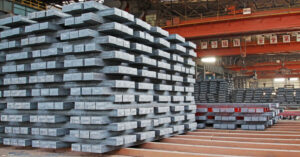
In January-October this year, Ukraine reduced exports of carbon steel semi-finished products in physical terms by 40.4% year-on-year to 1 million 34,588 thousand tons.
According to the statistics released by the State Customs Service (SCS), exports of semi-finished carbon steel products amounted to $529.584 million in monetary terms over the period (down 51.6%).
The main exports were made to Bulgaria (35.42% of supplies in monetary terms), Poland (23.85%) and Italy (9.97%).
In January-October, Ukraine imported 92 tons of semi-finished products from China worth $169 thousand, while in September-October, no imports were made.
As reported, in 2022, Ukraine decreased exports of carbon steel semi-finished products in physical terms by 72% compared to the previous year, to 1 million 899.729 thousand tons, and in monetary terms by 70.9%, to $1 billion 191.279 million. The main exports were made to Bulgaria (26.55% of supplies in monetary terms), Poland (13.97%) and Italy (12.13%).
In addition, Ukraine imported 5,558 thousand tons of similar products in 2022, which is 85.7% less than in 2021. In monetary terms, imports decreased by 86% to $3.634 million. Imports were carried out from the Russian Federation (96.92% of supplies before the war), China (1.84%), and Romania (1.21%).

In January-October this year, Ukraine reduced exports of titanium ores and concentrate in physical terms by 96.3% year-on-year to 10.170 thousand tons.
According to statistics released by the State Customs Service (SCS) on Wednesday, exports of titanium ores and concentrate decreased by 84.7% to $16.983 million in monetary terms.
The main exports were to Turkey (36.92% of supplies in monetary terms), Japan (18.90%) and the Netherlands (6.04%).
During the period, Ukraine imported 1 ton of such ore from the Netherlands for $2 thousand.
As reported, in 2022, Ukraine reduced exports of titanium ore and concentrate in physical terms by 41.8% compared to the previous year to 322.143 thousand tons, and in monetary terms by 19.6% to $130.144 million. At the same time, the main exports were made to the Czech Republic (47.91% of supplies in monetary terms), the United States (11.94%) and Romania (9.75%).
In 2022, Ukraine imported 196 tons of similar products from Senegal (70.41%) and Turkey (29.59%) for $115 thousand.
In Ukraine, titanium ores are currently mined mainly by the United Mining and Chemical Company (UMCC), which manages Vilnohirsk Mining and Metallurgical Plant (VGMK, Dnipro region) and Irshansk Mining and Metallurgical Plant (Irshansk, Dnipro region). ) and Irshansk Mining and Processing Plant (IGOK, Zhytomyr region), as well as Mezhirichinsky GOK and Valky Ilmenite (both based in Irshansk, Zhytomyr region).
In addition, Velta (Dnipro) has built a mining and processing plant at Birzulivske deposit with a capacity of 240 thousand tons of ilmenite concentrate per year.